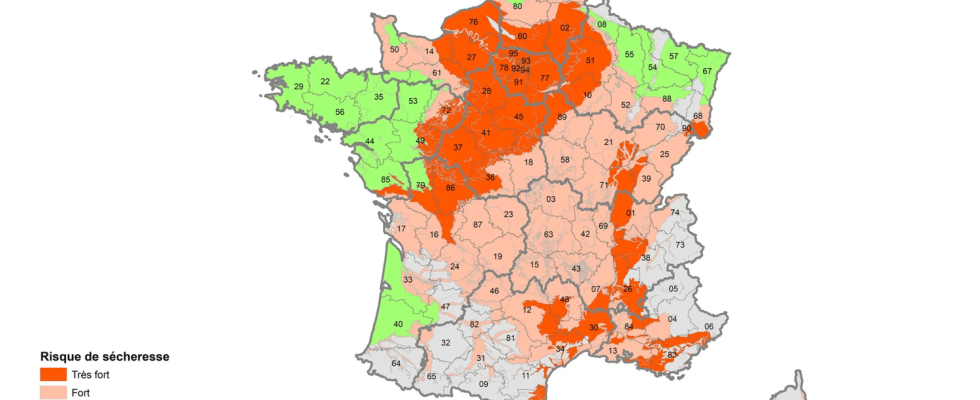The groundwater situation map shows levels below monthly normals. And that of drought risk shows that no department has a satisfactory level.
Despite the spring rains, the risk of drought is still high in France. The ministry publishes Wednesday, May 17 the state of groundwater for April and the estimate of the drought risk department by department. An inventory drawn up by the Bureau of Geological and Mining Research (BRGM). In April, the groundwater situation improved very slightly in the northern two-thirds of the country, but it is still more worrying than last year. It is very unequal in the territory. 68% of the water tables are at levels below seasonal norms. They were 75% in March and 58% last year at the same time.
>> Drought: summer 2023 is likely to be more critical than the previous one
The levels are very low for 20% of the water tables. This concerns the Mediterranean rim, the Rhone corridor, from Dijon to Bas-Dauphiné, and a small part of the east. On the other hand, water levels have improved in two thirds of the country with the heavy rains in the spring. The levels of underground reserves are high in Brittany and in part of the Grand-Est.
Météo France does not forecast three-month rainfall. But the body predicts temperatures above normal (which means more needs for vegetation). Overall, groundwater recharge is now complete. The current state represents the main water reserve capital available to the country before the summer.

The drought risk map presents a scale of four levels, from “very strong“ To “very weak“. No area is classified as risk “very weak”. The departments which are wholly or partly classified as risk “very strong” are mainly located in the Paris region, which has not caught up despite the rains of recent weeks, in Normandy, south of Hauts-de-France and in the Center region. The Mediterranean rim and the Rhône valley are also concerned, as are the departments of Vienne and a fringe of Deux-Sèvres, high places of the battle against the mega-basins.Only Brittany, part of the Pays-de-la-Loire, the west of the Aquitaine basin and part of the Grand-Est are at the “low” risk level.
Along with this map, the ministry also publishes a guide to restriction measures. It is the updating of a document for the prefects which dates from 2021. It specifies the measures that can be taken according to the four restriction decrees, to create a common base. The first level is “vigilance“, the second to “alert“, with measures to reduce and prohibit the use of water. Then comes the level of decree “heightened alert“with even stronger limitations, before the level”stopped crisis” and the cessation of non-priority water withdrawals, including withdrawals for agricultural purposes. Only withdrawals to ensure the exercise of priority uses are authorized (health, civil security, drinking water, sanitation). According to this updated document for the attention of the prefects, it is for example possible to water the vegetable gardens at night at the level “stopped crisis“.at the level”heightened alert”, it is still possible to upgrade the pools and make the first fillings. Finally, in level “crisis”, drip irrigation is still permitted for seeds and seedlings.
